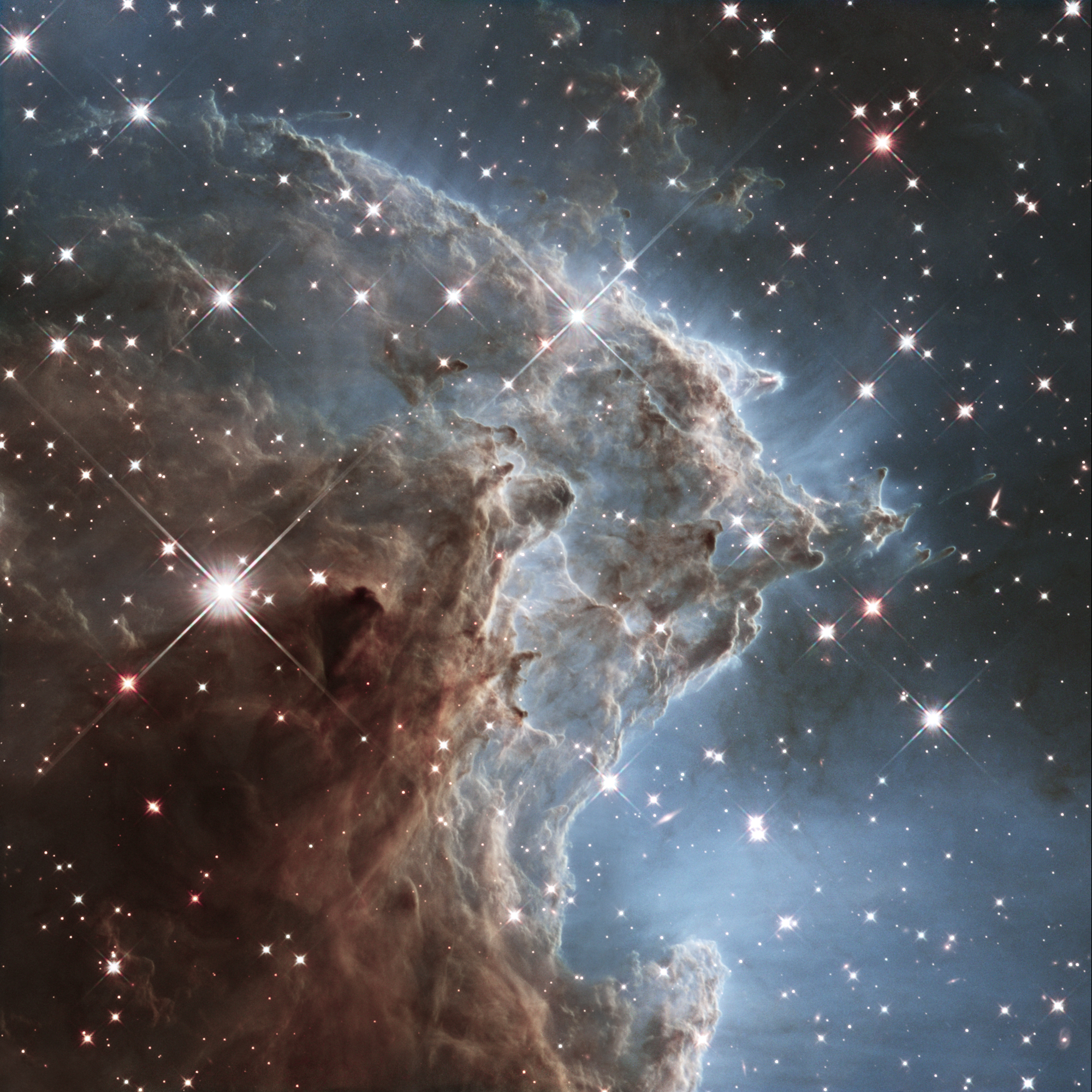
Monkey Head Nebula
The Hubble Space Telescope captured this infrared-light portrait of a roiling region of star birth located 6,400 light-years away. The Hubble mosaic unveils a collection of carved knots of gas and dust in a small portion of the Monkey Head Nebula (also known as NGC 2174 and Sharpless Sh2-252). The nebula is a star-forming region that hosts dusky dust clouds silhouetted against glowing gas. Massive, newly formed stars near the center of the nebula (and toward the right in this image) are blasting away at dust within the nebula. Ultraviolet light from these bright stars helps carve the dust into giant pillars. The nebula is mostly composed of hydrogen gas, which becomes ionized by the ultraviolet radiation. As the interstellar dust particles are warmed from the radiation from the stars in the center of the nebula, they heat up and begin to glow at infrared wavelengths.
